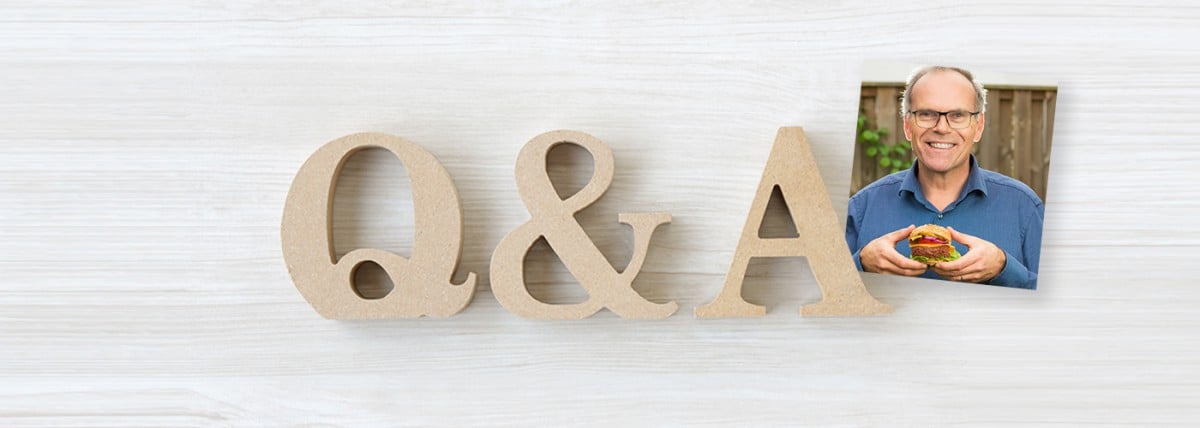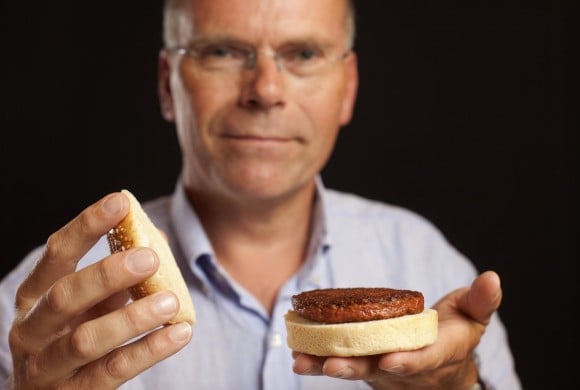6 questions with the father of clean meat, Dr. Mark Post

At a London press conference on August 5, 2013, Dr. Mark Post, MD, Ph.D., debuted the first burger ever made from beef grown outside of a cow. He went on to co-found Mosa Meat, where he serves as Chief Scientific Officer, developing tissue engineering technology that can produce affordable clean meat at scale.
In the five short years since that first clean meat patty, the cost of Dr. Post’s original $330,000 burger has dropped by orders of magnitude. At an industrial scale, the current process would produce burgers for about $10.50 each, as Mosa Meat continues to work toward price-competitive beef grown without slaughter. With the infusion of $8.8 million from their Series A funding round earlier this summer, Dr. Post and his team aim to bring clean meat to market by 2021.
Dr. Post received his medical degree and Ph.D. from the University of Utrecht. He has been a medical school professor at Harvard Medical School, Dartmouth Medical School, and Maastricht University. In 2006, his expertise in tissue engineering for the medical field led him to apply the same concepts to food. The potential benefits to humanity have kept him involved.
Dr. Post is also an advisor to GFI as well as the co-organizer, co-host, and scientific advisor to our Good Food Conference this September 6-7. He will be speaking at the conference (sign up to watch on live stream!). But you don’t have to wait until September to get a taste of his awesomeness! Read on for a conference preview from one of the most influential leaders for the future of meat.

As a physician specialized in growing tissues, you were in the perfect position to pioneer the clean meat movement. What first gave you the idea of applying this technology to the food system?
Although I would love to take credit for that idea, it was really Willem van Eelen who in 2004—forced is the right word—the idea on some of us academic researchers in the Netherlands. I can only take credit for understanding the potential of using cell culture and tissue engineering technology to produce meat after having been triggered by Willem.
Since you created that first burger in 2013, famously sponsored by Google co-founder Sergey Brin, how has your perspective on clean meat changed?
Having worked on this for nearly 6 years on my own, I am relieved that so many companies, researchers, and people have embarked on the same problem and technology. That starts to validate the field, although there is still a long way to go.
As you’ve pointed out, it takes 10 weeks to make one burger but would take just 12 weeks to make 100,000 burgers. What are the implications of and the limitations on this exponential potential?
The exponential growth is very helpful in the production system in principle. In real life, it is a challenge to keep the exponential growth going as cells start to become older and competition for nutrients and oxygen starts: depletion of nutrients will also be exponential. New technologies need to be developed and perfected to achieve the maximum growth potential of the stem cells while maintaining their capacity to differentiate into mature muscle tissue.

What has been the most gratifying breakthrough moment in this research and development process? Is it even possible to pick just one?
Six months before the unveiling of the hamburger in London, I realized that the technology could actually be used to produce a hamburger and that we were about to achieve that. Quite frankly, our investor had to point it out to me, as I had in my mind that this would be the outcome and failed to consider that it might not have worked.
Is there anything that the press consistently gets wrong?
Not really. I am quite impressed by how accurately the press covers this subject and pretty faithfully report what I am trying to convey. Being the press, it is understandable that they overemphasize the “yuck” factor, which I think will be a small and temporary issue.
What clean meat product are you most looking forward to eating in the future?
Ribeye.


